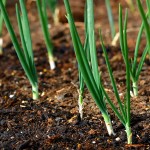Veg Of The Week – Asparagus
Why Grow It?
Asparagus isn’t easy to grow – it’s fussy about the soil it grows in and though it only crops for a little over a month, it takes up space in your veggie patch for the whole year. It also takes three years before you get any crop worth talking about. BUT (and it’s a big but), once you get it going it will produce for twenty years and it is undeniably delicious. So if you have the space, and the patience, give it a try.
Sowing
You can sow asparagus from seed but honestly – why would you bother? A plant that will crop for two decades is worth investing some money in. Buy young asparagus plants which are called “crowns”. Chose your site carefully – they will need good fertile soil in full sun with wind protection – raised beds are a good choice, particularly if your soil is heavy. Make sure the plot is free of perennial weeds before you start. Plant about ten plants in early spring – make a trench 30cm wide and 20cm deep (if you have more than one row, leave 50cm between rows) – add a thin layer of well rotted compost or manure and then add a 10 cm layer of soil in a ridge in the center of the trench. Place the crowns 30cm apart on top of the ridge with their roots splayed out. Then fill in the trench with soil, covering the crowns, and water. Spread a layer of well rotted compost or manure on top.
Growing
Keep the bed weed free. Then wait. Every year, add a mulch in the autumn. Asparagus produces a mass of fern like foliage that grows unexpectedly tall – up to 6ft. It will need supporting with canes otherwise it will fall over.
Harvesting
Don’t harvest for the first two years – you are trying to build up some strength in the plants. In the third year (see what I mean about patience?) you can harvest some spears but only a few. Thereafter you can harvest for about six weeks from May. Cut them when they are 13-15cm long and about the width of your finger.
Recommended Varieties
- Connovers Colossal
- Jersey Knight F1
Problems
The main problem is (surprise, surprise) slugs – they will eat the shoots before you can if you let them. Solution? Show them no mercy. In damp conditions foot and root rot can be an issue – if it strikes, remove the plants and destroy. Do not grow asparagus again in that spot.
GIY Tips
Asparagus needs to be grown in soil that has a pH of 6.3 to 7.5, buy yourself a testing kit and measure your soil pH before planting.



